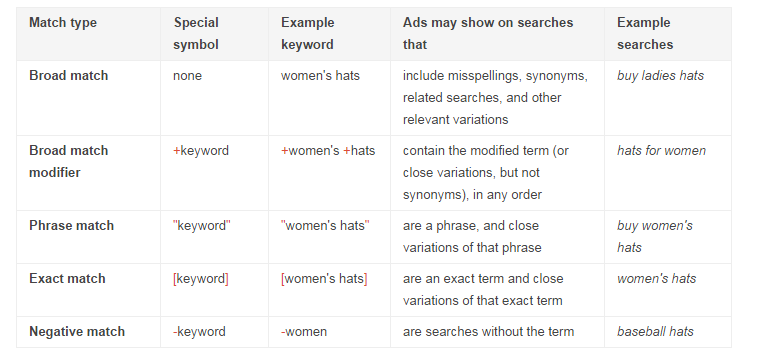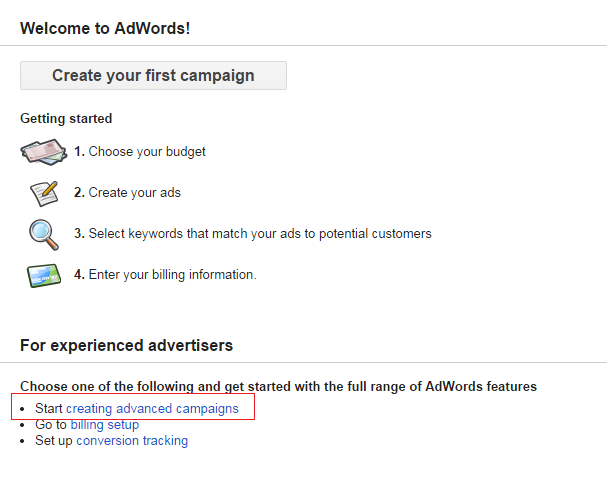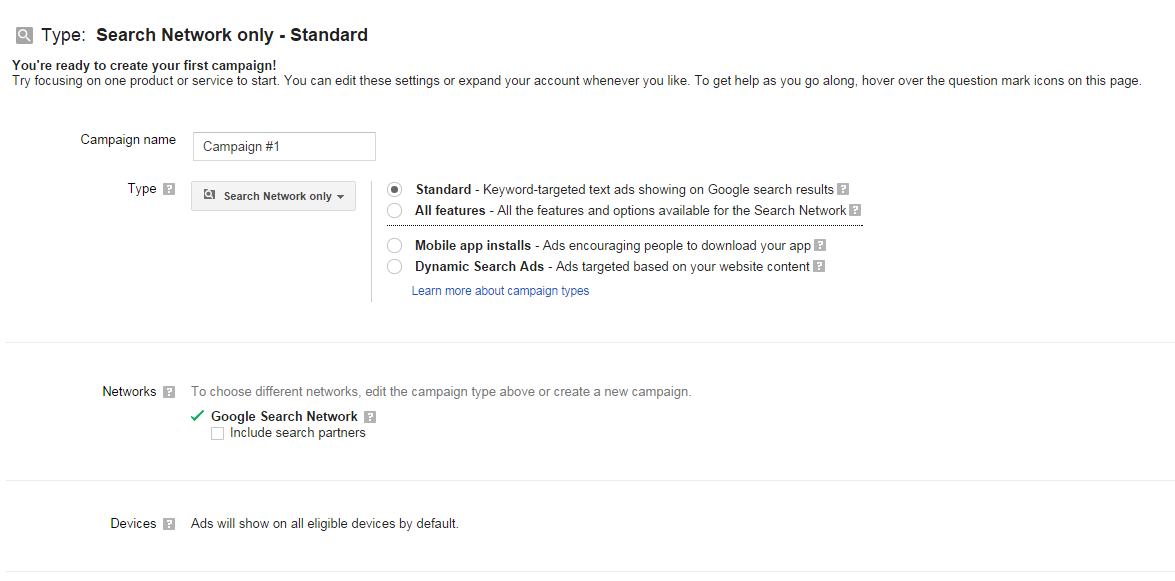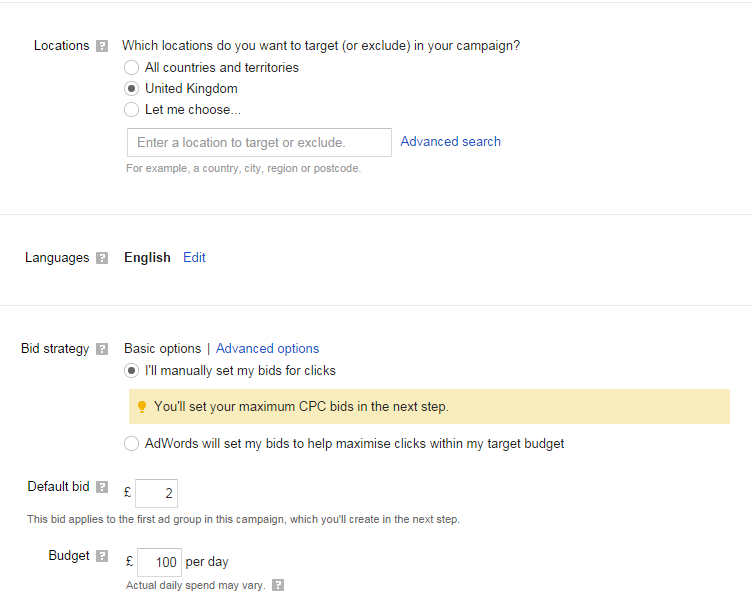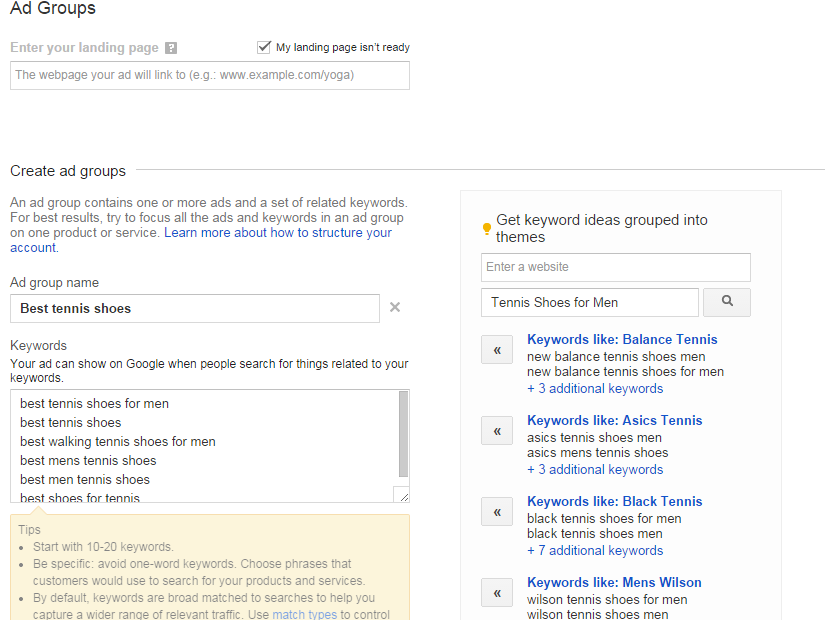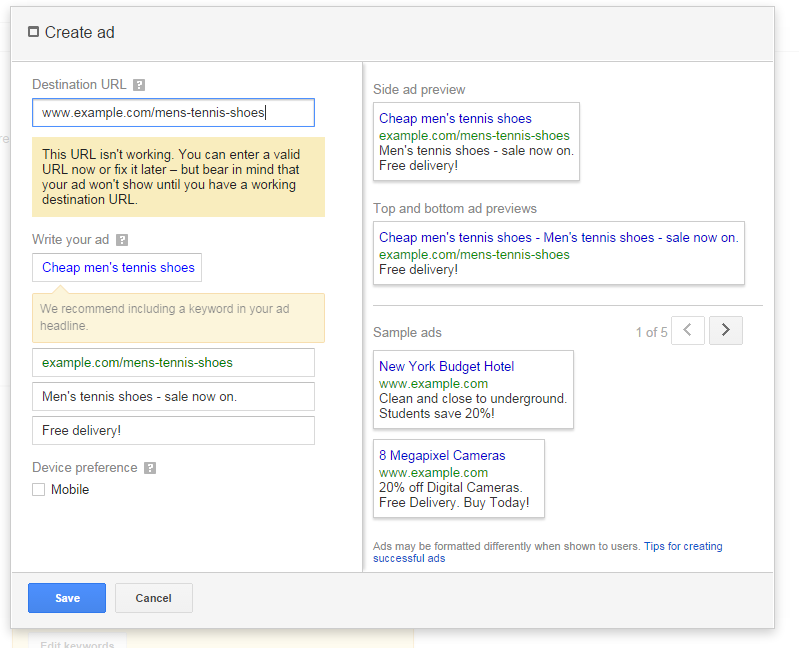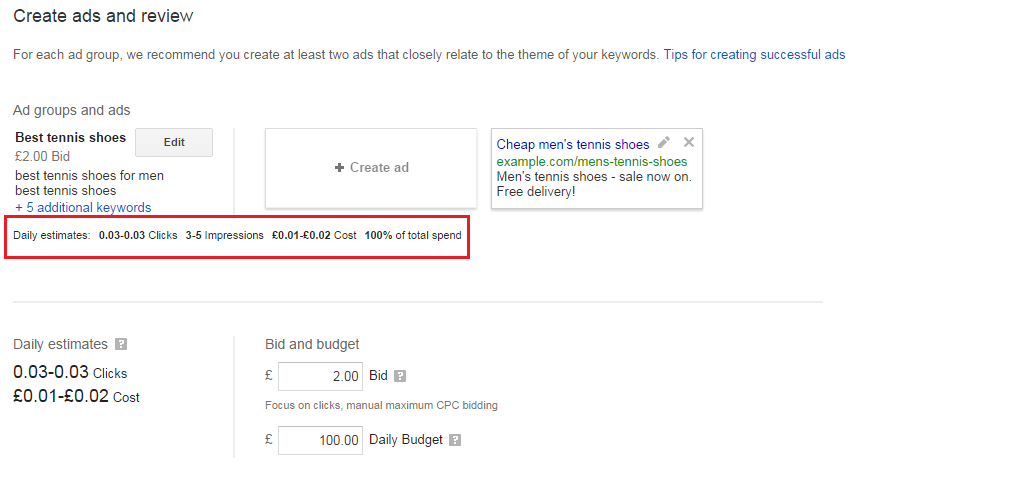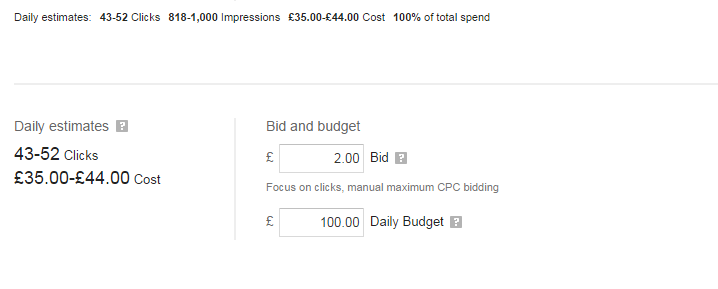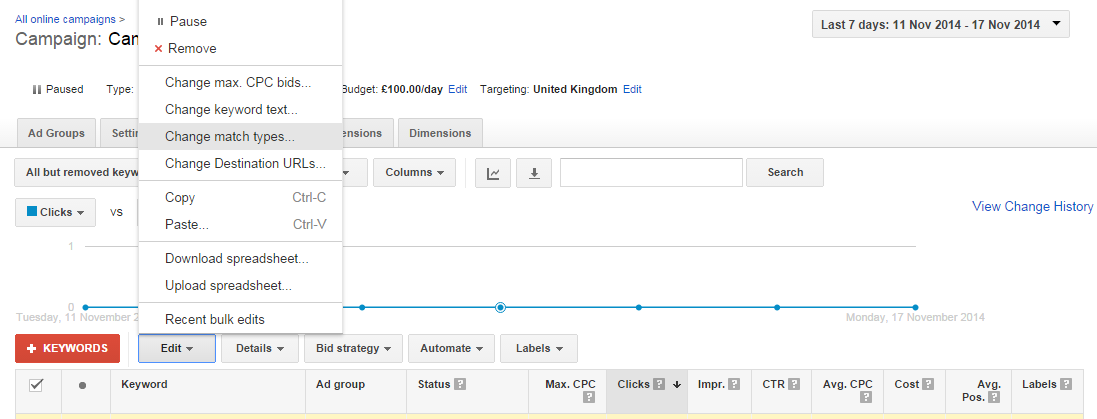Getting started with AdWords: Creating a campaign that works
Google AdWords is a great way to attract new customers in a cost effective manner, but it can be confusing and hard to master. This guide will explain what AdWords is and how you can use it to promote your business. There’s even a step-by-step guide to setting up your first AdWords campaign.
So what can AdWords do for your business?
If you’ve ever used Google, then you’ll have seen AdWords ads, even if you didn’t realise it at the time.
The easiest way to explain things is with an image.
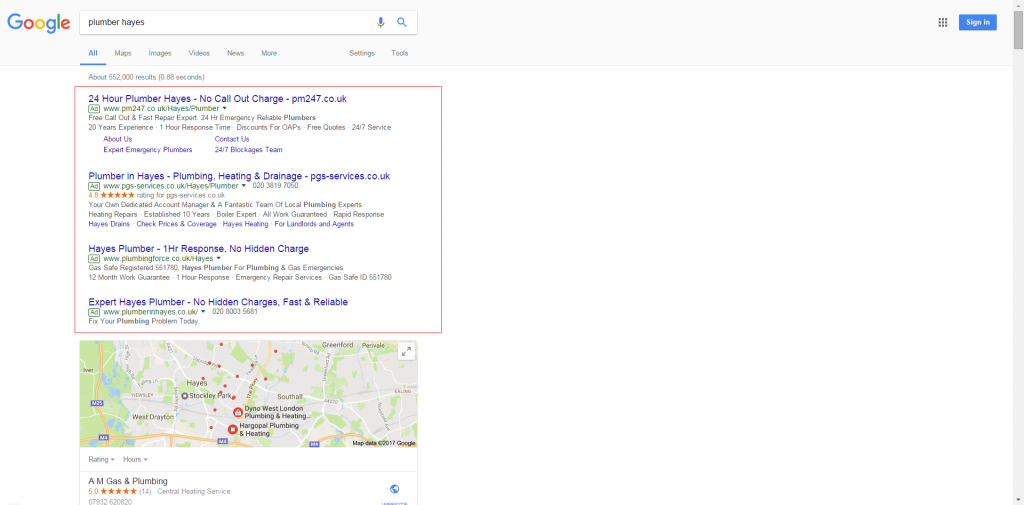
Google search results with ads highlighted for clarity
Here you can see adverts are displayed at the top of the page. That’s what AdWords can get you – high visibility in Google’s search results. The benefits are clear – with millions of people making billions of searches on Google every day, that’s a lot of potential customers. In this guide you’ll learn how to set up and manage an AdWords campaign for your business. If you’re completely new to AdWords or have run a campaign in the past without any success, this is the guide for you.
How this guide works
No one is going to learn everything about AdWords in one sitting. In this guide, we’ll be focusing on getting your first campaign up and running. But we won’t be creating a basic campaign because basic campaigns tend to waste money. Instead, we’ll look at how create an AdWords campaign that’s actually useful. In future articles, we’ll consider the steps you can take to learn more about AdWords so you can make the platform work even harder for your business.
Basic concepts
AdWords is a pay-per-click (PPC) advertising system, which means that advertisers pay each time someone clicks their advert. The amount paid for each click (the bid) can be controlled by the advertiser, so you can find a price that works for you.
Ads can be targeted using a range of factors including keywords, demographics and locations. Advertisers need to make sure that they’re targeting the right groups of people to ensure their ads are effective.
You’ll also need to write ad copy – the words that make up your ad. The copy should always be relevant to the product or service you’re offering, as well as being relevant to what people are searching for. We’ll look at how you can do this later in the guide.
Each ad will direct potential customers to a landing page – a page on your website dedicated to selling whatever product or service those particular customers are searching for. So an ad relating to tennis shoes should be shown to people searching for “tennis shoes” and link to a page offering tennis shoes.
Finally, you need to know about conversions. A conversion is when a visitor to your site takes the action you want them to. That action could be a sale, or it might simply be a visitor filling out a form. So if you were advertising men’s tennis shoes via AdWords, a visitor to your site would convert by buying a pair of men’s tennis shoes.
Before you even contemplate setting up your first advert, you need to understand how the basics elements outlined above work together. First we’ll look at relevance and how to achieve it and then how to monitor the return on investment for your adverts. These aren’t particularly complex topics, but it’s important you have a firm grasp of them before you create your first adverts.
Understanding the importance of relevance
Conversions are more likely to happen when the product potential customers are searching for, your ad and your landing page all complement each other.
To understand this, let’s imagine you’re looking for a plumber in Hayes.
The search: Is “plumber in Hayes”.
The ads: Here we can see all the ads align with the search by featuring it, or a close variant of it in their ad copy.
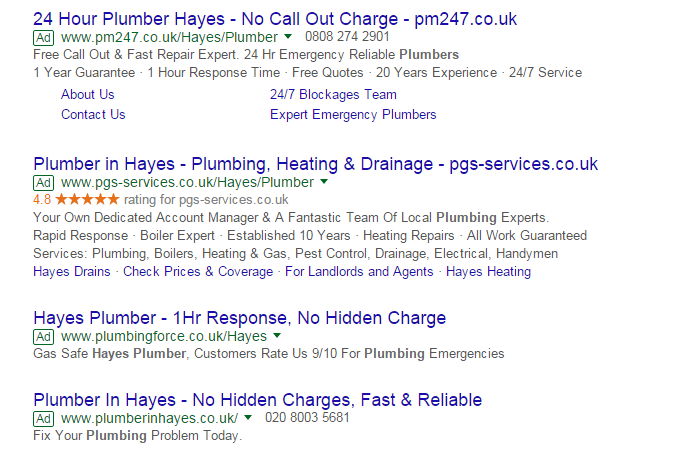
Note how the ad text has words relevant to our search in bold
The landing page: Here we can see all of the landing pages mention finding a plumber in Hayes.
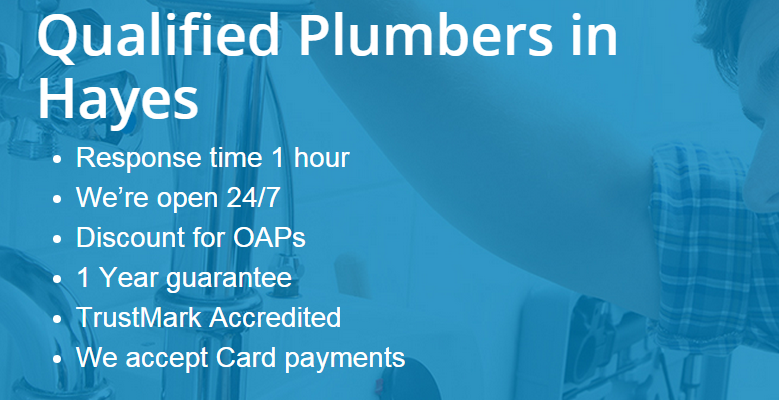
Detail from the landing page linked to in the first ad
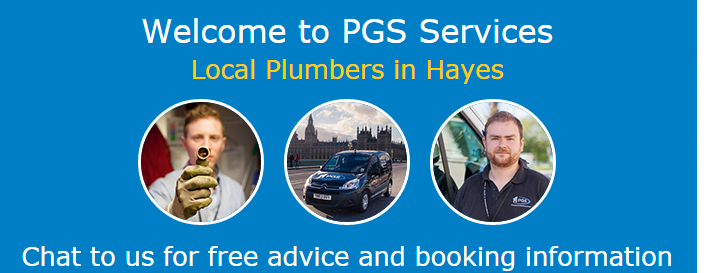
Detail from the landing page linked to in the second ad
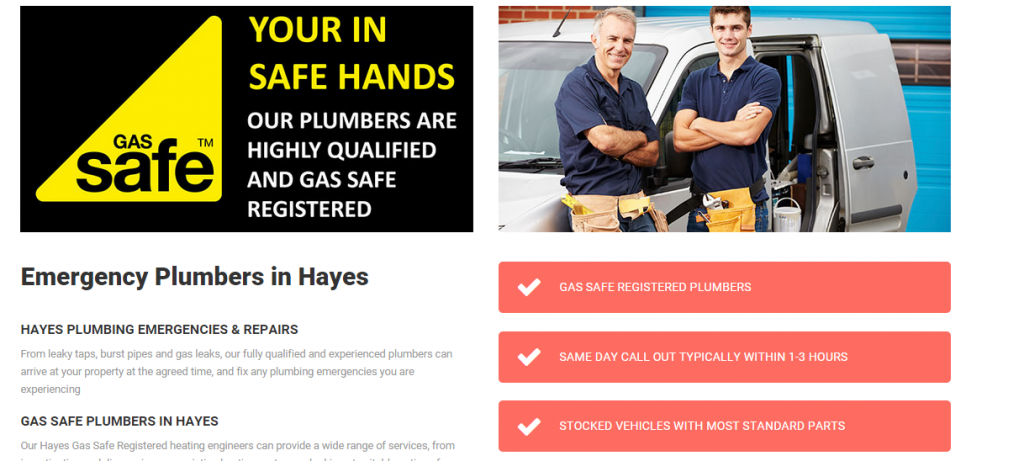
Detail from the landing page linked to in the third ad

Detail from the landing page linked to in the last ad
This is relevance in action. In all of the ads, the customer’s search term is reflected in the ads and in the landing page copy. That means potential customers know the website offers the service they’re looking for.
Every keyword-based ad you create should follow these principles. If that strand of relevance isn’t there, customers are unlikely to realise you offer what they want. This could mean they don’t click your ad, or worse, they click your ad and then become confused and leave your site, meaning you’ve paid for a click, failed to make a sale and probably lost a a customer to a competitor.
Planning your spend and ROI
The other vital thing to grasp before you create your first ad is return on investment (ROI). Obviously you don’t want to spend more on ads than you make from them, so it’s important to track ROI in order to work out if your ads are profitable.
To calculate your basic ROI you need to know:
1) How much product/service costs you to produce
2) How much you sell it for
3) How much you’ve spent on AdWords to achieve your sales.
Let’s say your product costs £50 to make and you sell it for £150. You spend £100 on AdWords ads and sell six units, giving you total sales of £900. You can now calculate your basic ROI by subtracting costs from your sales, then dividing by your costs.
In this case that gives you £900-(£300-£100)/(£300-£100) = ROI of 25%
Now at this stage you won’t know the number of sales you’re going to make through AdWords, or the amount of money you’ll need to spend to achieve them. But you can still use the above formula to guide your AdWords budget. We’ll explain how later in the article.
Keyword research
We’ve already looked at one of the reasons why keywords are so important to AdWords advertising, but how do you go about uncovering the right words for your ads? Bruce Clay has an excellent six point guide to conducting keyword research.
Essentially, it boils down to the following:
1) Deciding which landing pages you want to promote
2) Brainstorming on what keywords people would use to find these landing pages
3) Using a keyword planing tool (such as Google’s) to find other relevant suggestions
4) Deciding whether you can bid competitively on these terms (if you’re not sure, the only way to find out is to start experimenting.)
If you’re not confident about conducting keyword research at this stage, the AdWords platform does make suggestions based on your website. However, if you’re serious about making the most of AdWords, then keyword research is something you need to get to grips with.
A word on keyword matching
The chances are you’ll have searched for something on Google in the past and have seen a completely irrelevant advert. Take the below example.
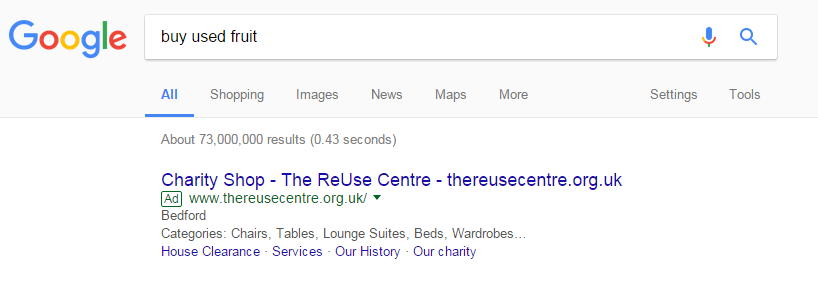
There’s probably not much of a market for second hand fruit
More often than not this is down to the advertiser not making proper use of keyword matching. Keyword matching is the level of leeway Google has when it decides whether or not to return an ad as a match for a query.
Here’s how Google summarises its match types.
You need to be really careful with match types or you could, unwittingly, end up selling second hand bananas. In the above example, the advertiser has likely used the broad match, or perhaps phrase match option for “buy bananas”. If it had used the exact match option, Google would not have returned its ad for the query “buy used bananas”.
If used carefully, broad match and phrase match can be really powerful tools. However, if you’re not sure what you’re doing, it’s best to stick to exact match to ensure you don’t get any unexpected results, especially for your first few campaigns.
Setting up your first campaign
Before you start you set up your first campaign you’ll need the following:
• A landing page you want to promote
• Keywords you’ve researched for that page
• A rough idea of your budget (We’ll get into specifics later)
• A sense of what your ad copy will look like (based on your keywords)
Having this information gives you a massive advantage over people who set up their first campaign without taking these things into account. Let’s get started. (NB: If any of the following images are too small, you can view larger versions by clicking them).
Finally, before we get started, it’s worth noting that Google regularly updates the way AdWords works, so you may find you experience differs slightly from the one detailed below.
Go to https://www.google.co.uk/adwords/ hit the “start now” button and fill in the relevant details. (You’ll need to set up a Google account if you don’t already have one.)
Then, ignore the button which says “create your first campaign” and instead click “creating advanced campaigns”.
Campaign name – Make sure your campaign name makes it really obvious what you’re promoting, so you can recognise it when you log back in to AdWords. Avoid names like “Campaign #1” (the default option). Instead, come up with a naming system that allows you to see at a glance what the campaign is about.
Type – Here you get to select which of Google’s ad networks you’d like to use. In this guide we’ll focus on the search network only.
Networks – here you can decide if you want to include Google’s search partners. For your first campaign, unselect this option. Doing so will ensure your ads only appear in Google’s search results.
Devices – Your campaign is set to show on all devices to begin with (Desktop, Tablet & Smartphone), but each advertiser will have a different preference. For example, if you’re selling products online is it easy for users to navigate and convert on a mobile device? If not, make sure you place mobile bids as -100%. Once you have set up your campaign simply click in to it, click settings > devices > then hover over the column called “Bid adj” to make adjustments (see below).
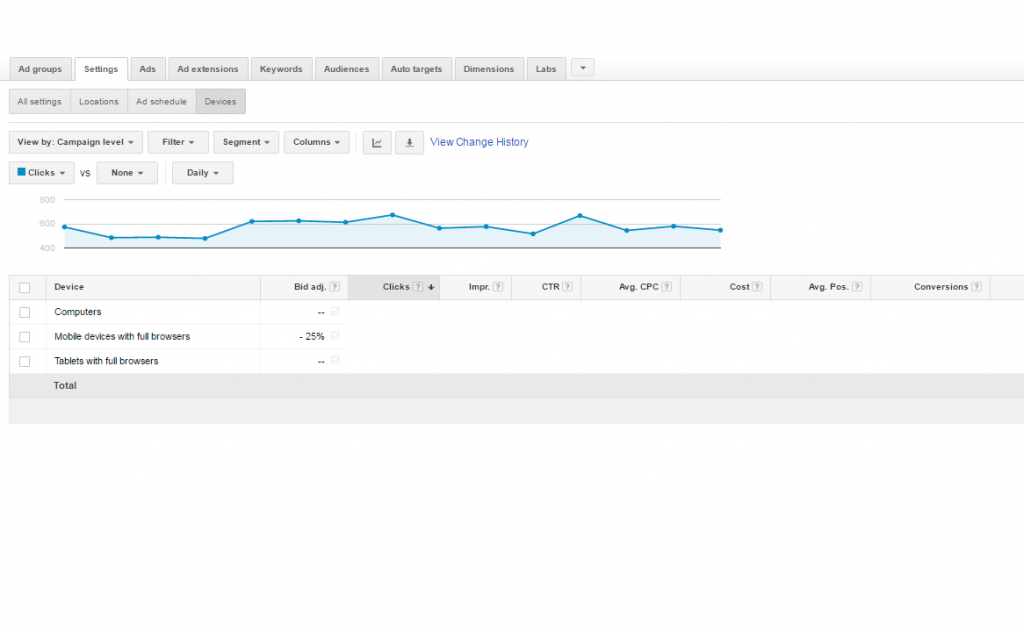
Location – This is crucial – make sure you’re ads can only be seen by people who can do business with you. So if you’re a plumber who covers a number of postcode areas, only target those postcodes. However, if you’re a business that sells a product online and ships across the UK, target the whole of the UK.
Languages – You can also target users on Google who speak a certain language, in most cases you will just set this to English.
Bid strategy – You’ll want to set this yourself. We’ll look at this in more depth later.
Default bid – The amount you want to pay when someone clicks your ad. For now enter the sum you’d be happy with paying per click, you’ll probably adjust this when you create your first advert.
Budget per day – The total amount you want to spend in a day. Use this to ensure you don’t spend huge sums without meaning to. Enter a sum you feel comfortable with. Bear in mind, in some cases spend can go over by 20% of your daily budget. So if you set this to £50 as an example, you could end up spending £60 per day!
Ad Extensions – For your first campaign, you don’t need to worry about them.
Save and continue. Now you need to create an ad group within your campaign.
Ad Groups
Ad groups allow you to organise your keywords into theme groups. In turn, this lets you ensure your ads are closely aligned with the search a user has performed. Let’s look at how to create you first ad group.
Name your ad group – Again, use a naming system that allows you to easily keep track of things.
Keywords – Add in the keywords you gathered during the keyword research phase. If you’ve added your landing page in the box at the top of the page, you’ll notice AdWords offers more keyword suggestions, but you can ignore these if you’re happy with the ones you have already developed.
Alternatively, you can use Google’s suggestions. However, make sure you check the relevance of each suggested keyword based on the page users will be sen to. In this example we’re selling tennis shoes, if we were to add a keyword relating to Wilson tennis shoes and the page we’re advertising doesn’t feature that specific brand, people clicking the ad are very unlikely to buy from us. That will result in wasted spend.
When you’re happy with your ad group, and you’ll probably only want to set up one for now, click “continue to ads”.
Creating an ad
Once you’ve clicked “continue to ads” you’ll see this pop up.
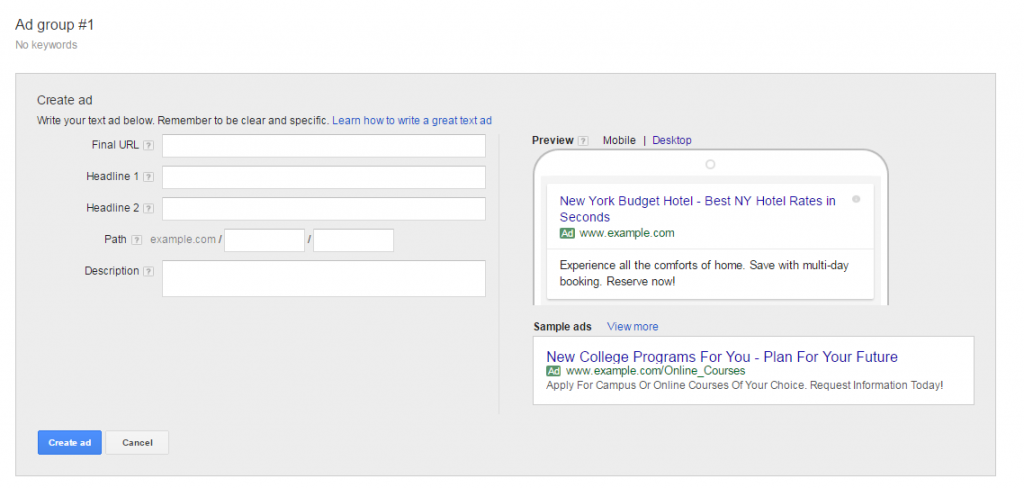
URL- First up, you need to enter the URL where you want users to land once they have clicked your ad.
Headline –a It’s best practice to include the keyword a user has searched for on Google in your headline, as this can improve click through rate. Let’s say you have the keyword “tennis shoes” in your AdGroup, you need to make sure this appears in Headline 1 or 2. It’s also a good idea to include a competitive price point, or your brand name in here.
Path – This allows you to customise the end of the URL, although this isn’t an essential part of ad creation.
Last up we have description – Here we have a 70 character limit and an extra chance to make user want to click your ad. It’s a good idea to try and include your keywords in here again.
If you’re struggling with any part of your ad, you can always perform searches on Google and get inspiration from competitors.
Save the ad. AdWords recommends creating two ads per ad group, so feel free to hit “create ad” and repeat the above steps. AdWords will show all then ads you create in your AdGroup initially, then it will start to favour the best performing.
Next, we can spend a bit more time thinking about our bid and budget. Pretty quickly, it becomes apparent our current ad group has a problem.
Only 3-5 people a day are going to see our ad (impressions), as a result we’ll get no visitors to our site (clicks). This is because the keywords we’ve selected have low search volumes. In this case, we’d need to conduct more keyword research to come up with relevant keywords with higher search volumes.
Adding extra keywords gives us more impressions, which means more people will see the ads, and a higher estimated number of clicks.
So how much should you be spending?
It’s not possible to work out how effective your first AdWords campaign will be before it runs, but there are ways you can get a good idea of how much money you should be committing to a campaign.
So let’s say that we know our tennis site sells one pair of shoes for every 20 visitors to the men’s tennis shoes page and that the profit on each pair is £30. Clearly, if we spend anything more than £30 to attract those 20 visitors through AdWords, the campaign is going to run at a loss. So adjust bid and budget until the daily estimated cost is lower than your expected profit. If you find you can’t do this, the chances are the keywords you’re targeting are too competitive and you’ll have to seek out terms that where the projected bid is lower. (The Google Keyword Planner provides this information.) If you’ve already set up conversions in Google Analytics, or a similar programme, you can use that information to guide your bids and budget. If you can’t work out how many visitors on average it takes for your site to make a sale, you’ll just have to make a guestimate and use that as a basis for your bid and budget. Regardless of which ever method you use, it’s important to keep a close eye on how your ads are performing and adjust your bid/budget if needed.
Last steps
Once you’re happy with your ad groups, keywords, ads, bid and budget, save and pause the campaign. You need to do this so you can change the keyword matching, as discussed above.
Click the keywords tab select all keywords by checking the top tick box.
Then click edit and “change match types”. Select “exact match” and then “make changes”.
If you haven’t already, input your billing details, and then unpause the campaign via the campaign tab.
And that’s it – your first AdWords campaign is now up and running. The principle behind setting up subsequent campaigns will be exactly the same, so you’ll now be able to repeat the process as often as you like.
Monitoring your first campaign
You’ll probably have already noticed the AdWords platform provides data on things like clicks, average CPC, CTR and so on. While these are useful, the most important metrics to track are costs and conversions.
You can learn how to set up conversions for your website with this guide from Google.
In essence, your first campaigns should be aimed at ensuring you make a profit from AdWords. For now, focus on your basic ROI using the formula we looked at earlier in the article: Revenue – cost of producing goods and Adwords spend / cost of producing goods and Adwords spend.
Remember – it takes time to get to grips with AdWords, so be prepared to commit a reasonably large budget to your early campaigns. Experiment with keywords, ad copy, bids and budgets while you find something that works for you.
This guide should have already given you an advantage over people who set up their first AdWords campaign without taking the time to consider the guiding principles behind the platform. In the coming months we’ll look at advanced concepts including testing, localisation, ad extensions, and more, all of which can help you get even better returns from AdWords.

